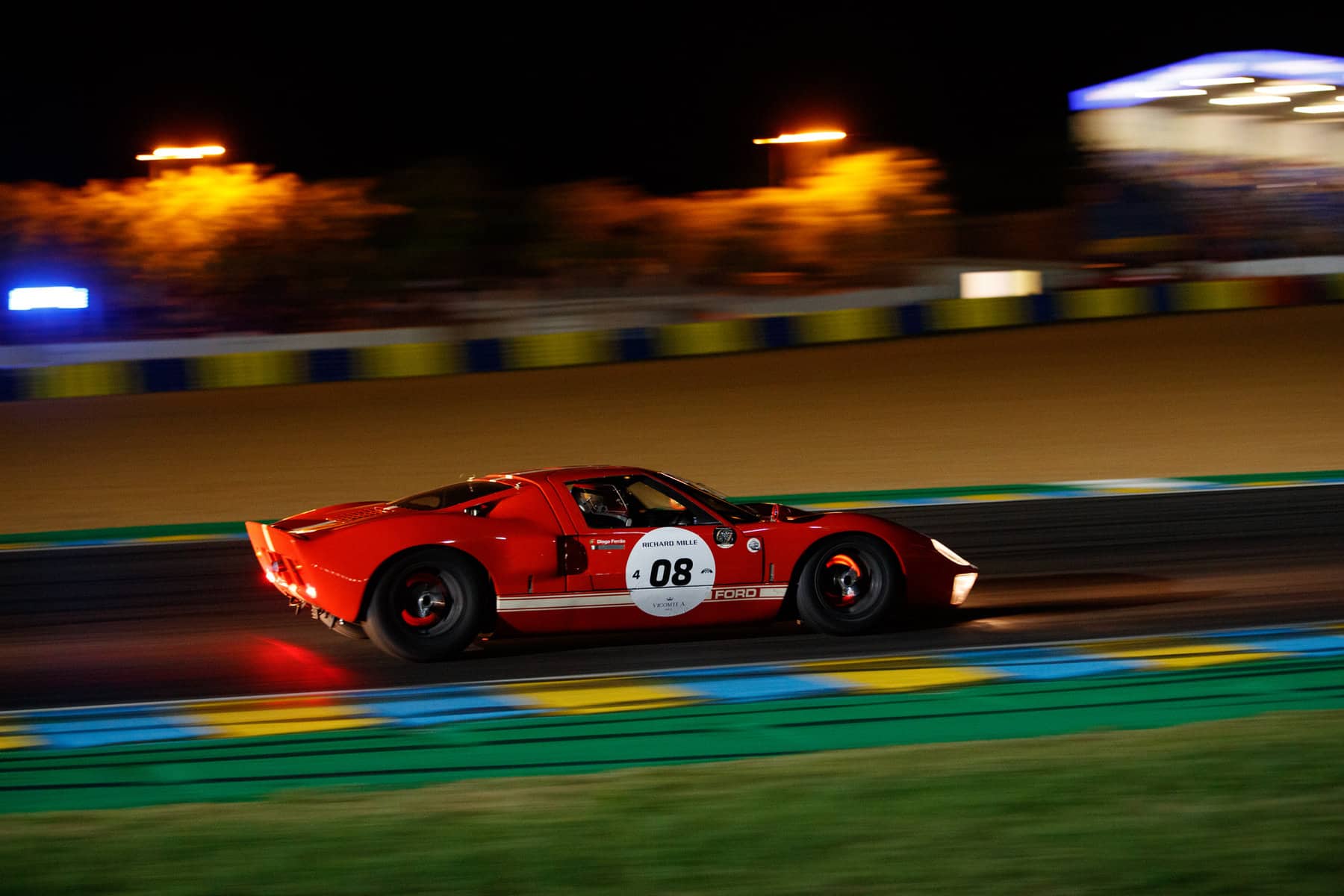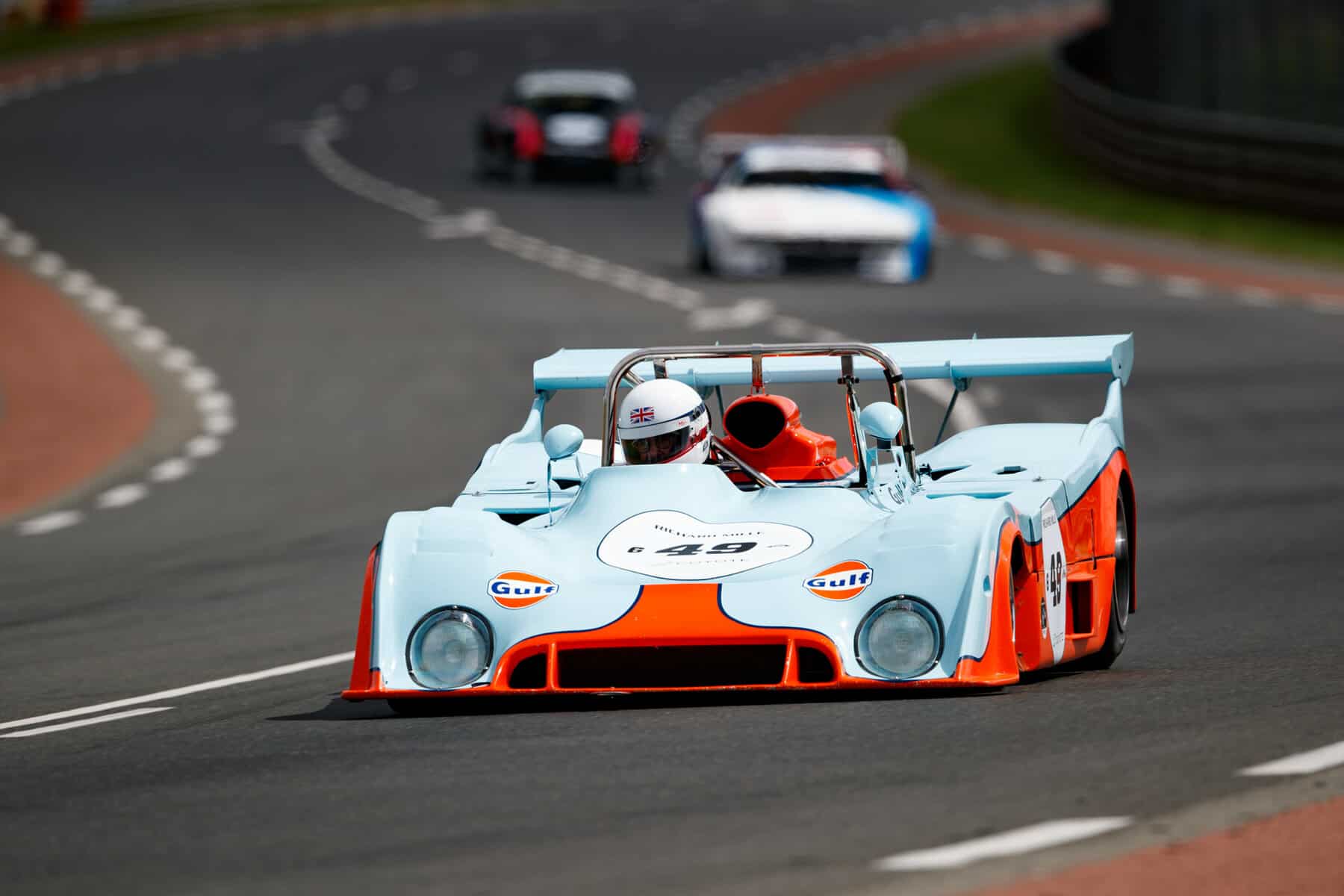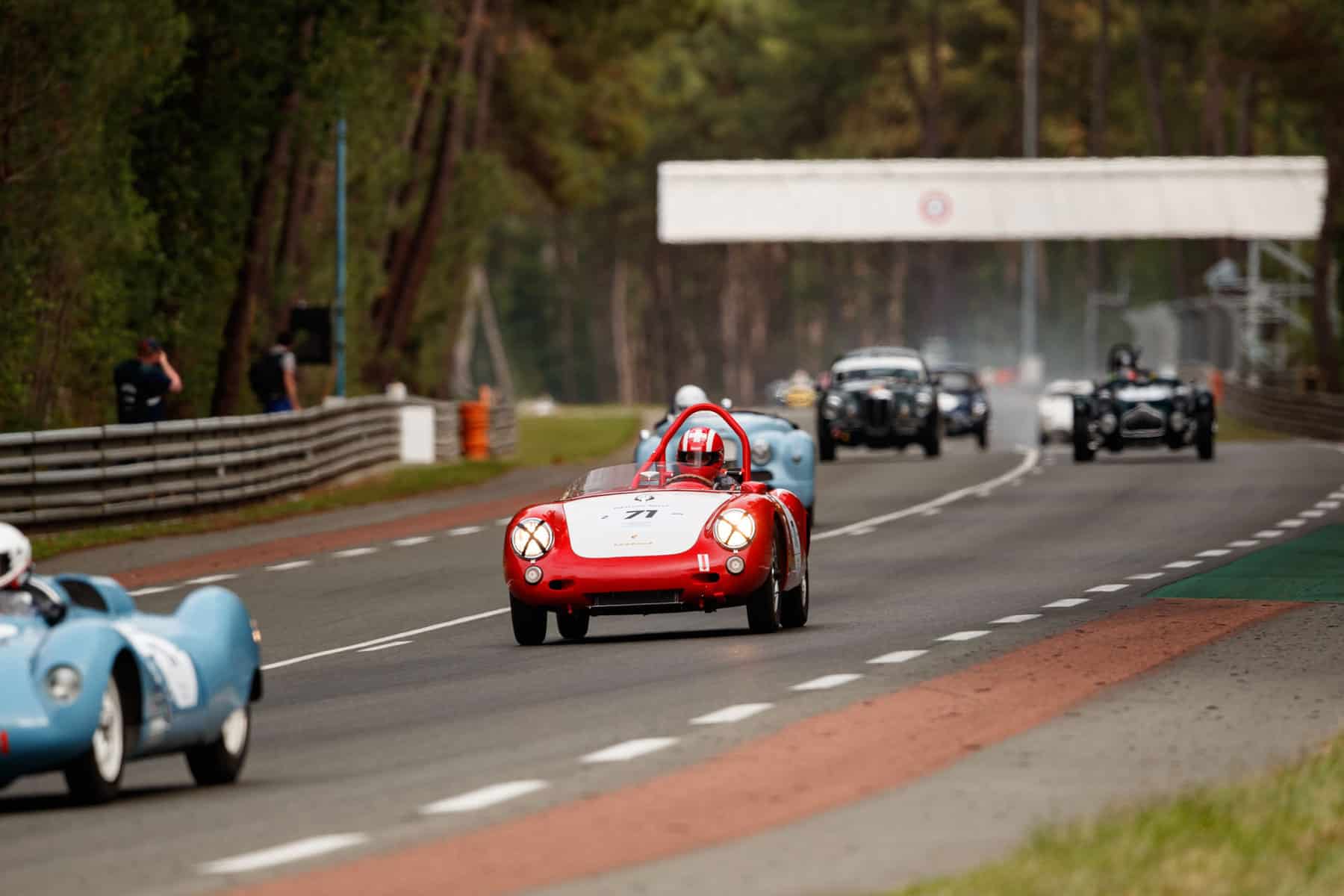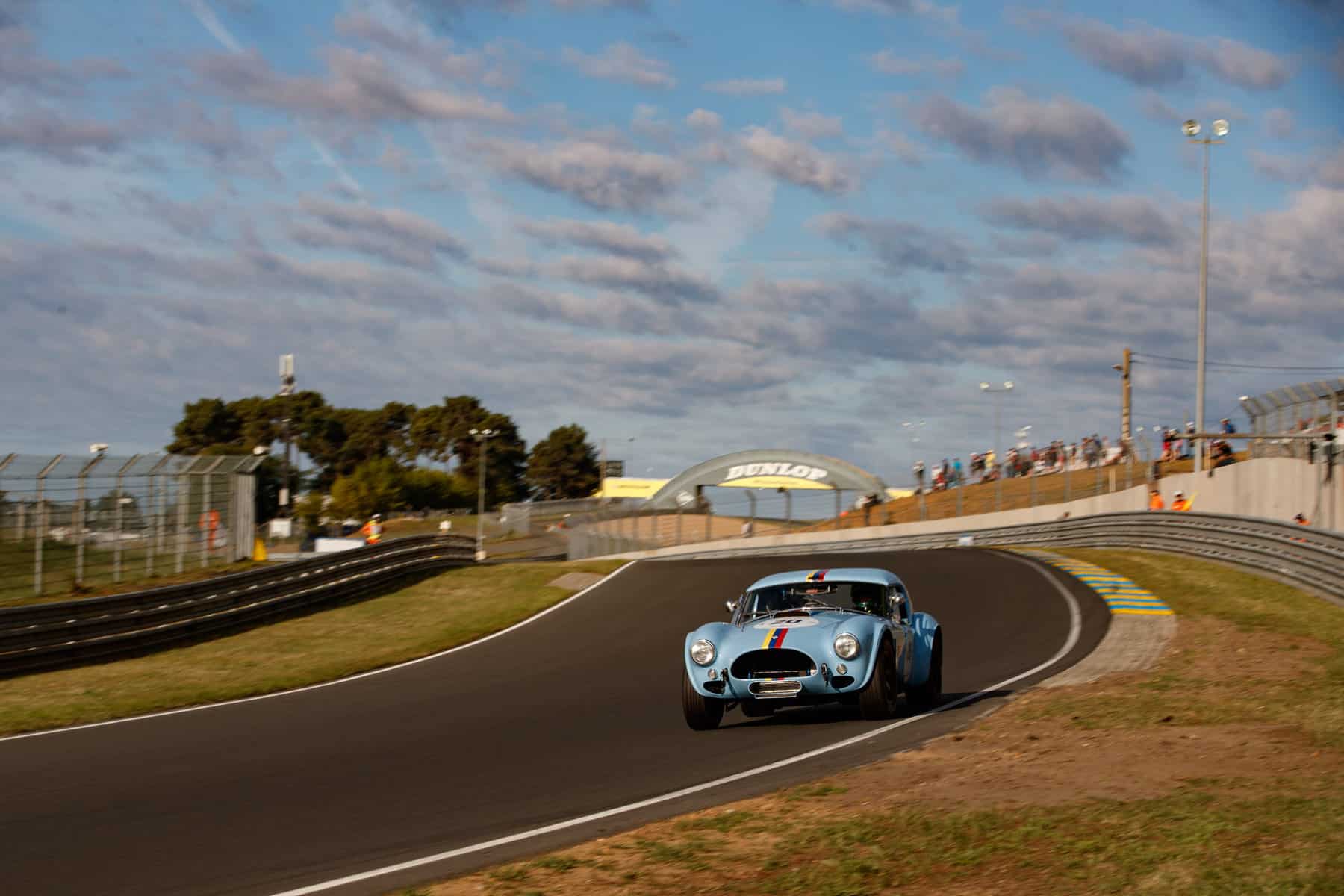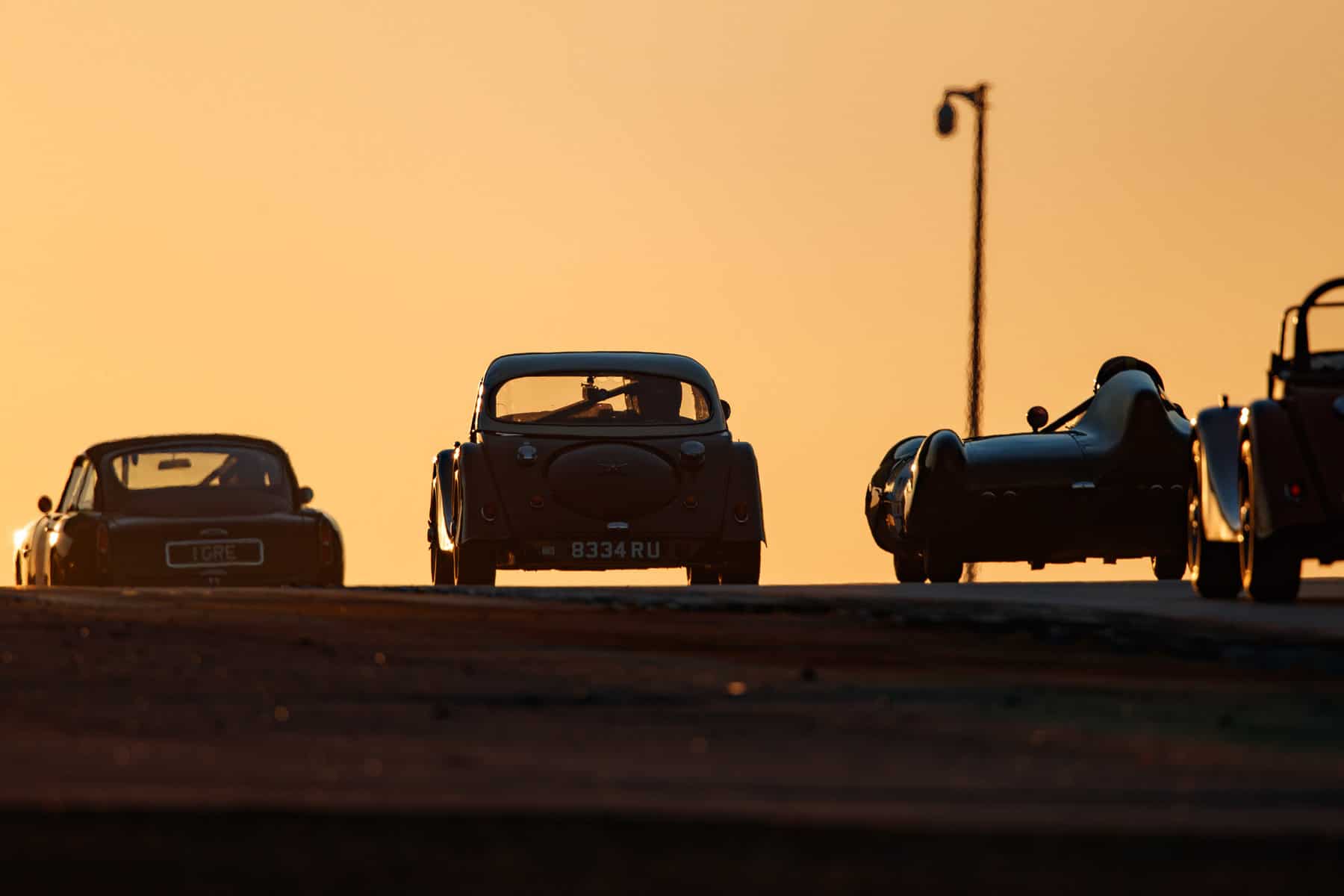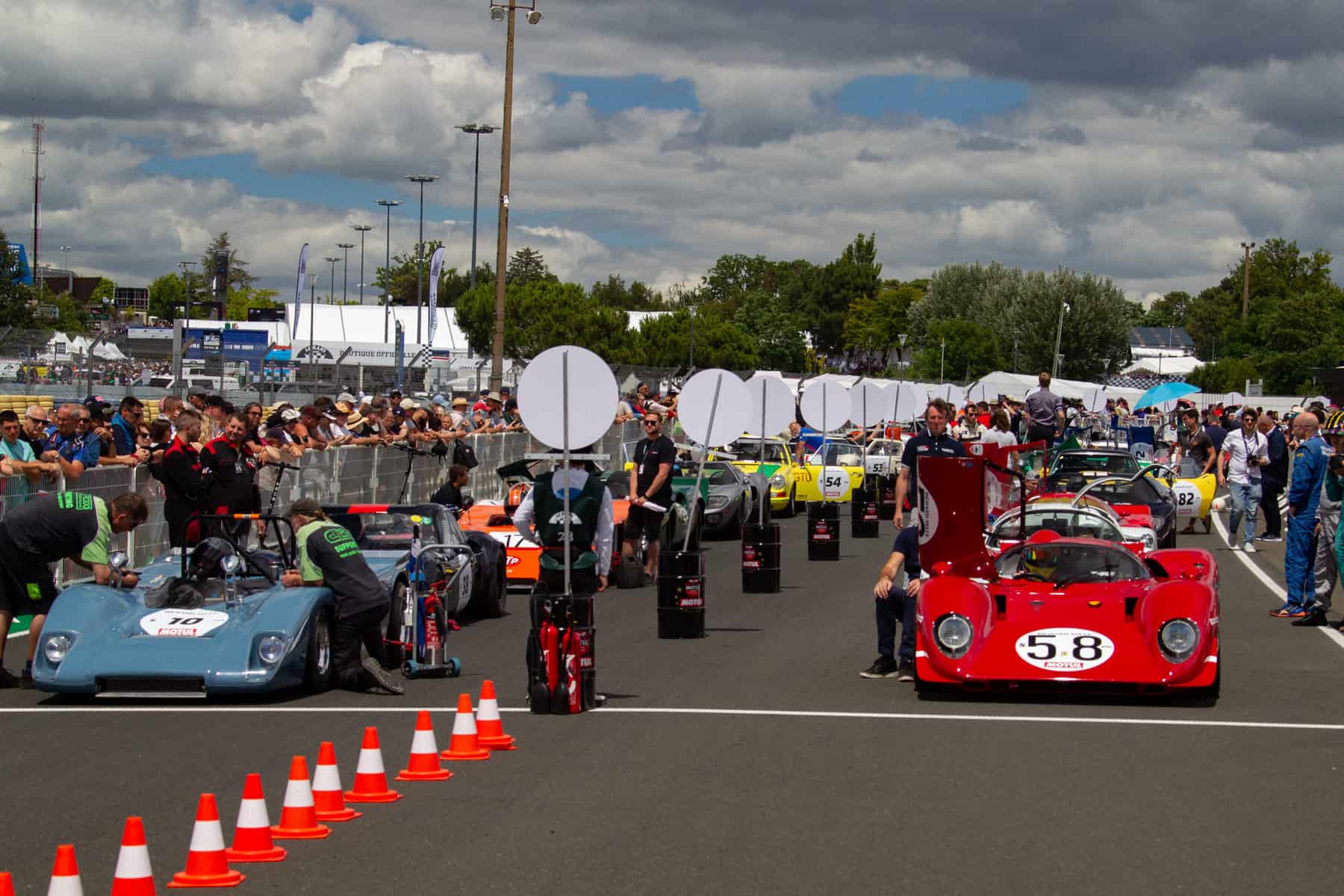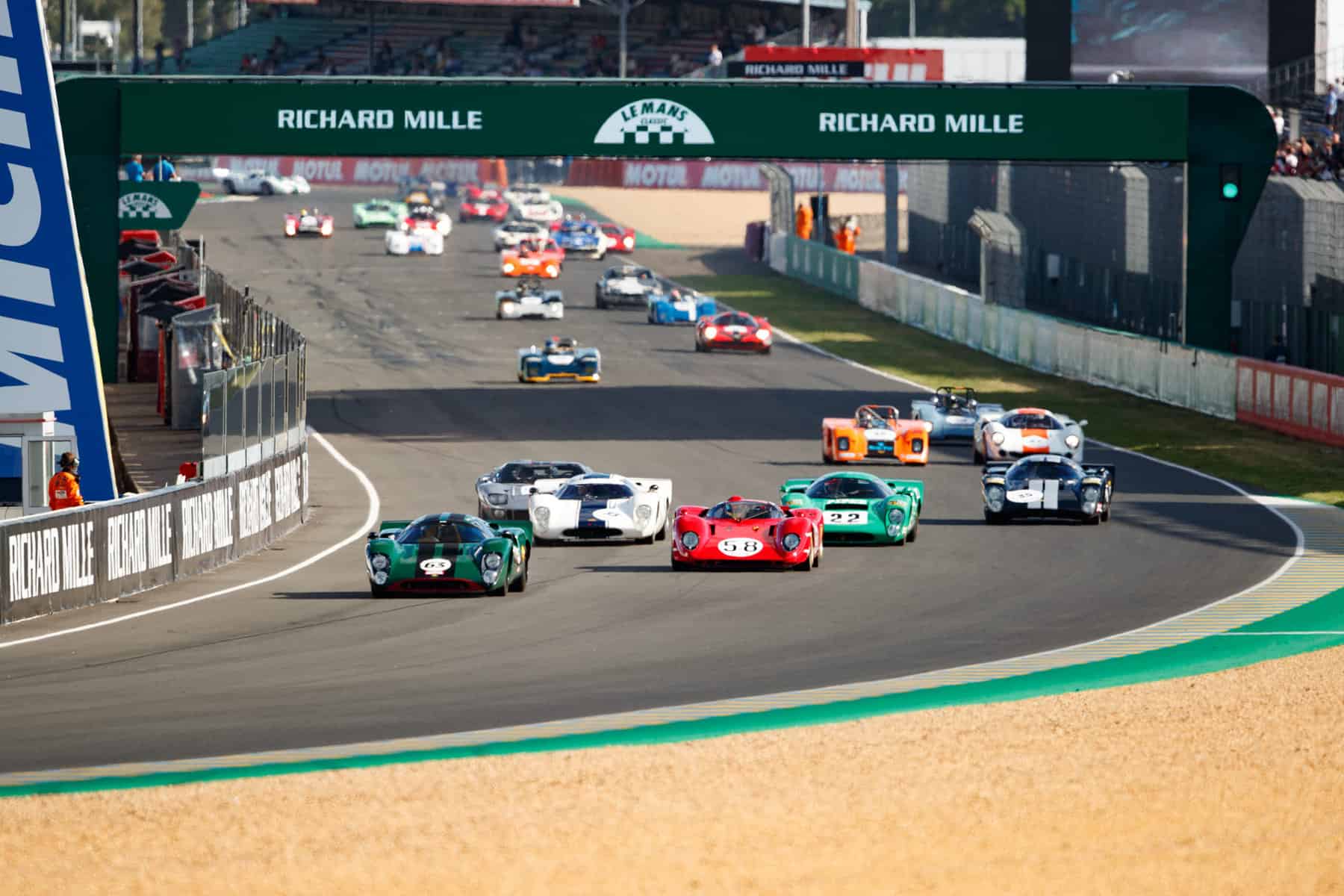2022 Le Mans Classic
This year's gathering of historic cars was the largest ever
WORDS & IMAGES BY: WOUTER MELISSEN
There are historic race meetings almost every weekend, but none can quite match the magnitude of the biennial Le Mans Classic. With seven hundred fifty competition cars, eight thousand club vehicles and over two hundred thousand spectators assembled at the Circuit de la Sarthe, the tenth edition was the largest yet. Held during the first weekend of July 2022, the event saw almost continuous track action from Friday morning through to Sunday afternoon.
First organized by French specialists Peter Auto in 2002, the Le Mans Classic started as a celebration of the rich history of the 24 Hours of Le Mans. Then held every two years, it has very much grown into an event in its own right. Despite its evolution, it has remained true to the original idea of racing historic Le Mans cars for 24 hours in alternating batches. During the first edition, there were five grids based on the age of the vehicles, but a sixth grid was added, stretching the cut-off to 1981.
Crucial to the success of the Le Mans Classic was the use of the entire 13.6 km Circuit de la Sarthe. Using public roads for a vast majority of the track, this privilege was usually only reserved to the 24 Hours of Le Mans. Many of the most famous sections of the track, such as the Mulsanne Straight for instance, the run to Indianapolis corner, and the high-speed Porsche Curves, are not part of the permanent Le Mans Bugatti circuit. The opportunity to race on such hallowed motorsport ground was not missed from the first edition.
With the main event not starting until 4 pm on Saturday afternoon, there was also room in the schedule for several support races. This year, there were no fewer than four, with one-make races for Porsches and Jaguars, as well as dedicated Group C and Endurance Racing Legends (ERL) races. The latter, open to GT racers and sports prototypes from 1993 through to 2010, was already on the schedule in 2018, but as a high-speed demonstration only. Now a set fixture during all Peter Auto meetings, the ERL grid had a proper forty-five-minute race at this year’s edition.
With sixty-eight cars entered, the ERL had a capacity grid. Not only the size, but also the quality of the field was impressive as it included two early 2000s Bentley, an Audi R8, a pair of Maserati MC12s and a colorful mix of Porsche 911-based GT racers. These are still relatively new cars, which allowed both Mike Newton and Gregor Fisken to return to Le Mans in the very cars they competed in the 24 Hours with some 20 years ago. The race itself was quite eventful, and the final result was re-shuffled a bit due to penalties. Eventually, Shaun Lynn in his Bentley Speed 8 was declared the winner with Mr. John of B., and Soheil Ayari were classified second in the slightly earlier Bentley EXP Speed 8.
During the 1980s, Group C cars dominated the Le Mans grids. The Group C regulations were relatively lenient, with a limited fuel supply as the main restriction. Fitted with very powerful engines that benefit from ground-effect aerodynamics and boasting glorious designs, these Group C cars have become stuff of legend. The field gathered for this year’s Le Mans Classic support race was one of the best we have ever seen. There were no fewer than six V12-engined Silk Cut Jaguars, two V10-engined Peugeot 905s and also an impressive selection of Porsche 956s and 962Cs. The German Gebhardt team was also back with two Group C2 cars the German privateers had run in period.
On Saturday morning, there was a 43-minute slot in the schedule for the Group C race. The grid had been set during two qualifying sessions on Friday. Pole position was for the Porsche 962C that was shared by owner Ivan Vercoutere and the still blisteringly quick Ralf Kelleners. The German driver immediately grabbed the lead but after the driver change, the 962C dropped down the order, eventually finishing fourth. Starting second, the Jaguar XJR-9 of Jon Minshaw and Phil Keen moved through the field in the opposite order. Grabbing the lead on lap seven, the British pairing scored a popular win.
“It means a great deal to me to bring my Silk Cut Jag back to Le Mans, it last raced here in 1988 and had finished sixteenth. To bring it back and win is such a great feeling,” Minshaw explained. Behind Minshaw and Keen, the fight for second between Christophe d’Ansembourg and Olivier Galant, both in Jaguars, was absolutely breathtaking. After switching positions several times, the fight was eventually settled in favor of d’Ansembourg.
In and of itself well worth the visit, the support program was followed at four o’clock by the eighteen feature races: three for each of the six grids. The maximum capacity per race was set at seventy-five cars and for most grids there were actually reserve entries. These were allowed to race only if one of the cars on the main list dropped out. On Friday, there was a qualifying session for the six grids and also night practices that ran well into the early hours of Saturday. This meant that the only time there were no competition cars on the track was Saturday between 3:00 and 9:30 am.
Somewhat confusingly, the Le Mans Classic races were actually kicked off with Grid 4, covering the period between 1962 and 1965. This was the start of the legendary Ford/Ferrari wars and accordingly, the grid featured a nice selection of GT40s, Shelby Cobras and also a Ferrari 250 GTO and 250 LM. As has become a reality in historic racing, not all of these were original cars with the field also featuring very accurate but more recent continuation cars.
Grid 4 was also the last of the grids that included a traditional “Le Mans start” with the drivers running across the track to the cars. This was only a faux-start as the cars were then stopped further up the track to give the drivers time to properly buckle up and get in the right grid order again. This was followed by a proper rolling start from behind the safety car. Grids 1 through 4 only had the Le Mans start for one of the three races. Grids 5 and 6 only had rolling starts.
Starting on pole position for Grid 4 was current Ford CEO Jim Farley, appropriately driving a GT40. One of favorites for the victory, Diogo Ferrao, was forced to start well down the order: “Qualifying was difficult, with an engine overheating issue. The team did a great job to find was what was wrong, but we had to start the race in P46. That meant when I would start the race, I was already twenty-five seconds behind the leaders.” That meant all plans made before the race were out of the window: “The only tactic was racing flat out, but with care to avoid any crashing into any of the forty-six cars I needed to overtake.”
He did so with great verve in the first race: “I finished race one with twenty seconds behind. I then had two races to recover these twenty seconds to Shaun Lynn (in a similar Ford GT40). That looked like a difficult job.” It turned out that this was difficult but not impossible. In the second race, Ferrao had made up thirteen seconds and was ahead again in the third when Shaun Lynn was forced to retire. This ensured that over three races, Ferrao was the deserved winner. A distant second was pole-man Farley, who was over four minutes down the order.
Chasing victory did not prevent Ferrao from enjoying the unique Le Mans Classic atmosphere, particularly at night: “It is just magic, even when trying to be competitive, it is hard to miss the magic of being in the pre-grid with all the lights, the Le Mans grandstand just in front of us and such fantastic cars ready to start.” Ferrao continued: “In the race, slipstreaming a GT40 and seeing the downshifts of your opponent from the fire coming out of the exhausts is just epic.”
Perhaps the most evocative of all grids was the fifth, headlined by a Porsche 917 K and a Ferrari 312 P. Driven by Remo Lips, the V12-engined Ferrari also proved very fast and if it was not for a penalty could have very well scored a scratch win. In the end the car was classified third overall, after scoring a win in the third race. Further highlights included a nice line-up of Porsche 935s in Grid 6 and the return to Le Mans of the 1934 winning Alfa Romeo 8C 2300. Brought over from the United States by owner Rob Kauffmann, it was classified tenth overall in Grid 1.
In addition to the action on the track, there was also plenty to see for visitors on the vast Le Mans grounds. All the paddocks were open to the public, which meant that all competition cars could be admired up close. There were also numerous of marque clubs that displayed a colorful selection of cars from their respective members. In the “Village,” vendors of related products were on hand to offer their wares. French auctioneer company Artcurial was also present with a well-stocked sale that took place Saturday morning.
An experienced organizer himself, Ferrao was also impressed by the event: “It is a massive and difficult event to put together, with so many cars, drivers and spectators. It can be a bit difficult to control but after ten editions, I believe it is still getting better and better.” For all involved it was a welcome return after the tenth edition was postponed twice, in 2020 and 2021 due to the pandemic. Minshaw agreed: “It was so great to be back at the Classic. With the cars, the people, and the clubs, you have everything there if you are into cars. It’s the Goodwood Revival on steroids!”
Usually only held every two years, the Le Mans Classic will be back in 2023. Again scheduled during the first weekend of July, it will be a key part of the 24 Hours of Le Mans hundredth anniversary celebrations. Minshaw, for one, will definitely be back: “I cannot wait for next year to bring the XJR-9 back and hopefully have a little luck with my E-Type.”
